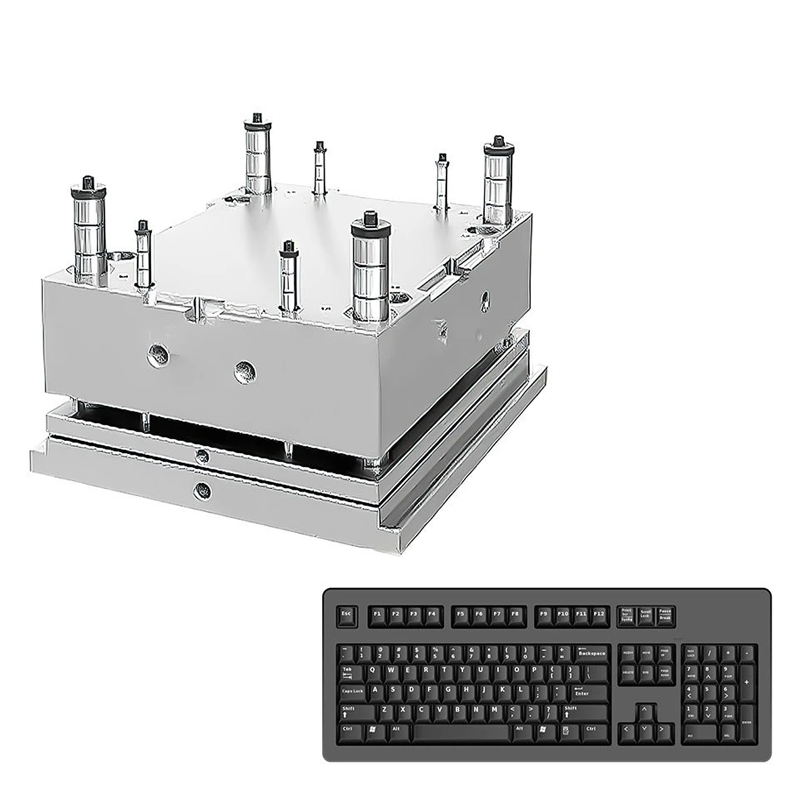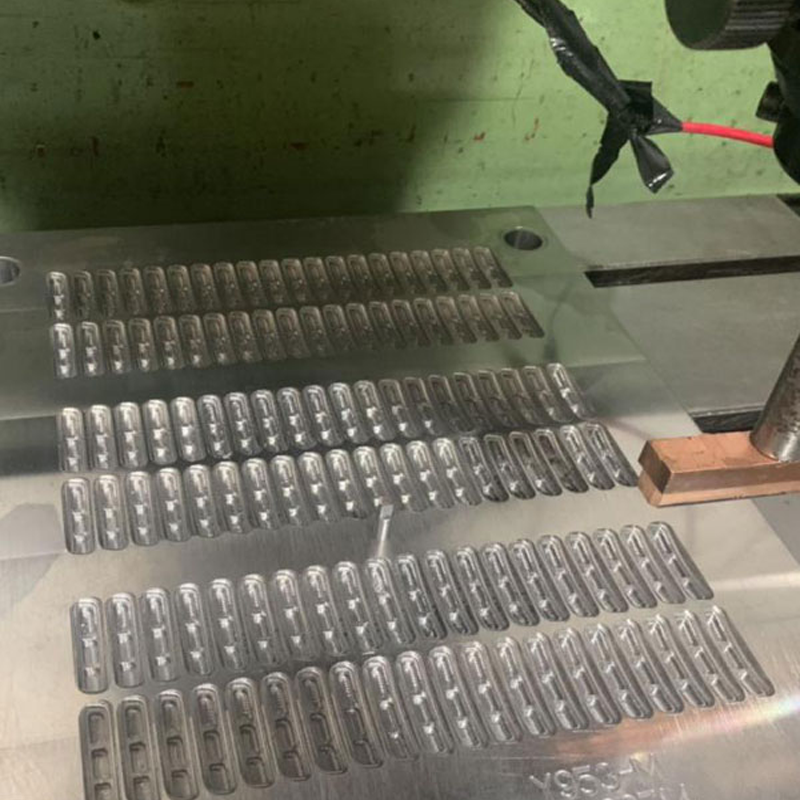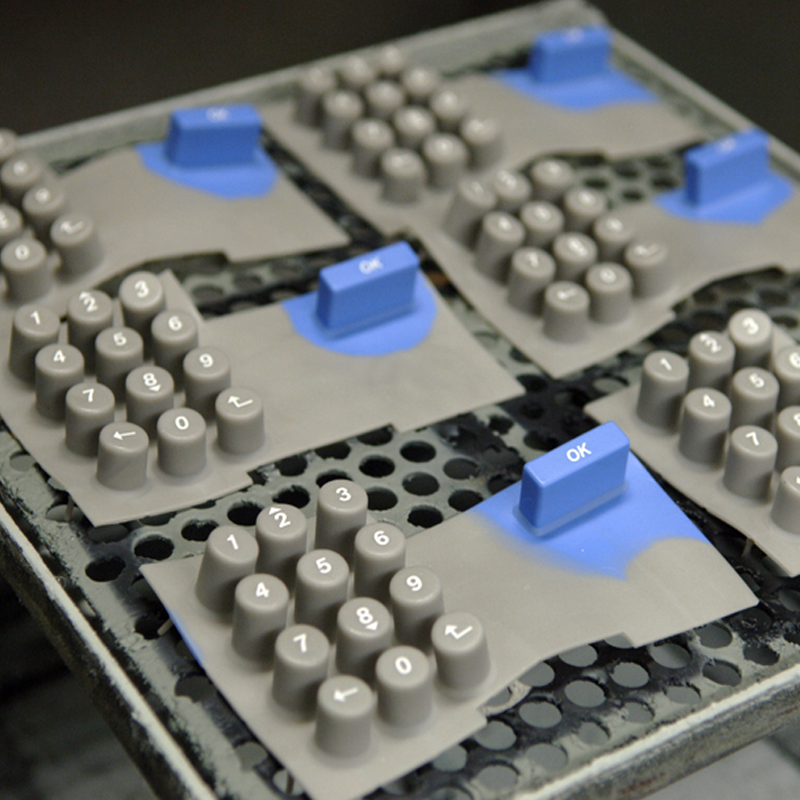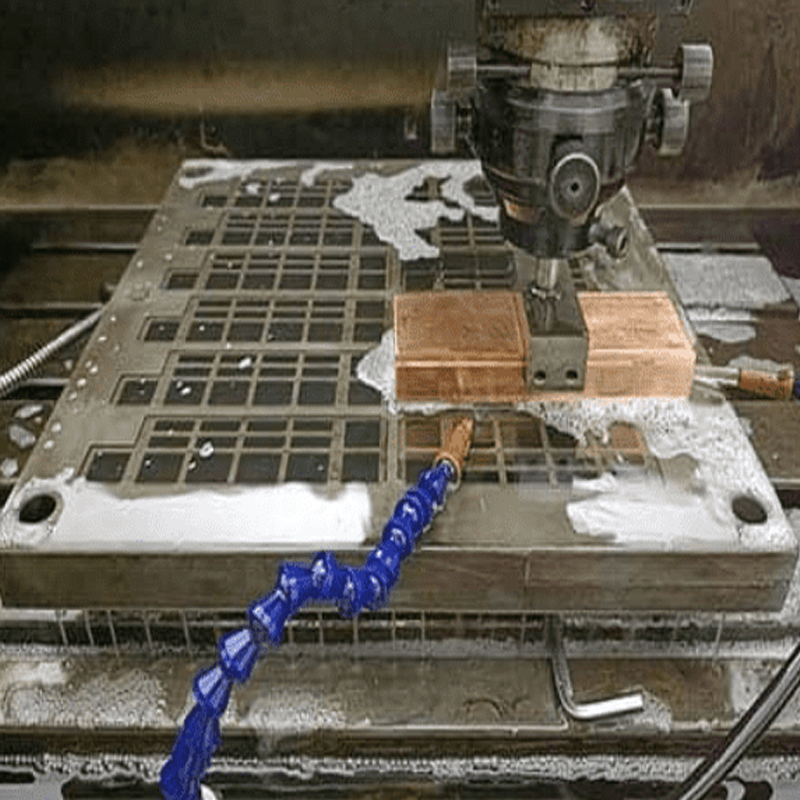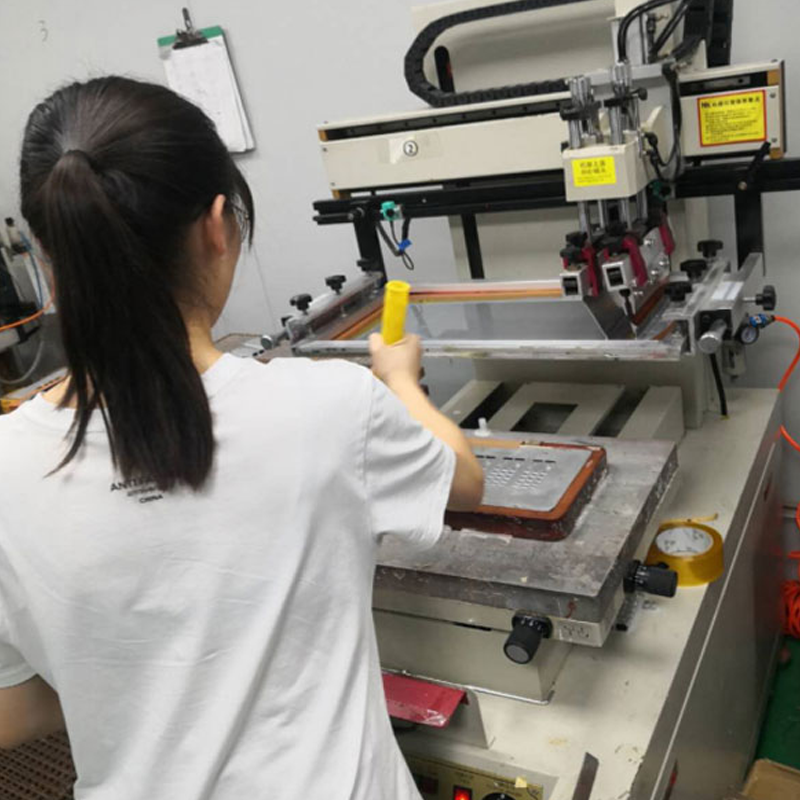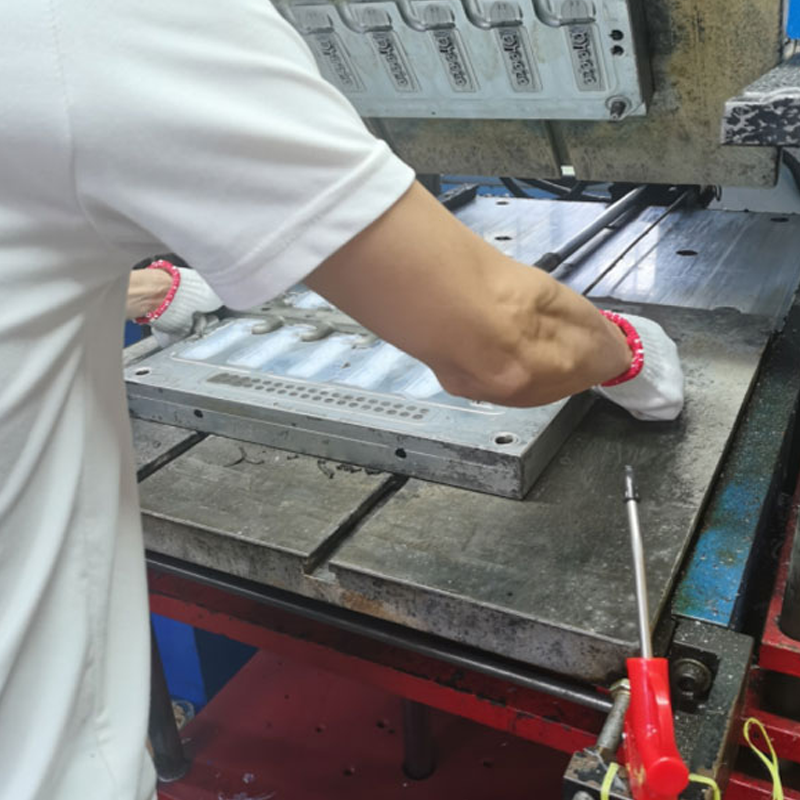Mold design plays a pivotal role in the early stages of silicone rubber keyboard production. A well-executed mold design ensures the efficiency of the production process and the high quality of the final product. Silicone molds come in various shapes and sizes, and they can be constructed from different types of metals, each offering unique characteristics and benefits. At Silkeypad, we understand the intricacies of mold design and collaborate with expert mold makers who bring decades of experience in liquid silicone rubber (LSR) injection molding to every project.
When we receive Released for Production 3D CAD files from our customers, we initiate the mold design process, taking into account every detail of the design. Silkeypad utilizes advanced 3D modeling software, SolidWorks, to craft highly accurate mold parameters. Our engineers are trained to leverage SolidWorks’ capabilities to simulate and optimize mold performance, ensuring the final product is both functional and precise. During this design phase, the behavior of LSR, a liquid with low viscosity that flows quickly even at low injection pressures, is carefully considered to ensure the mold functions seamlessly during the molding process.
Material Selection for Mold Production
One of the critical decisions in the mold design process is selecting the material used for the mold itself. Different materials offer different benefits, and the choice of material will directly influence the durability, cost, and longevity of the mold. For silicone rubber keyboard production, the most common materials used for the mold core and cavity are steel and aluminum.
Steel molds, with their robustness and ability to withstand high temperatures, are ideal for large-scale, high-volume production. These molds offer longevity and minimal wear, making them the preferred choice for long-term LSR molding. On the other hand, aluminum molds are a more affordable option and are lighter than steel. However, over time and with continuous thermal cycles, aluminum molds can undergo an annealing process that affects their hardness and ductility, leading to potential wear and tear. The material choice depends on several factors, including the thickness of the parts being molded and the complexity of the mold design.
![]()
Mold Design Considerations for Silicone Rubber
Silicone rubber behaves differently from other materials during the molding process, and understanding its properties is essential for designing an efficient mold. One crucial factor is that LSR expands when heated, which can impact the mold’s performance. After the part is removed from the mold, it typically shrinks by approximately 2-3% as it cools. Various factors influence the shrinkage rate, including the temperature of the mold, pressure inside the mold cavity, and the thickness of the silicone part being molded.
For example, thicker parts generally experience less shrinkage than thinner parts. These considerations are particularly important when producing silicone components that require tight tolerances, such as silicone rubber keyboards, which need to meet high precision standards for proper functionality.
The Finish of the Mold Surface
The finish of the mold surface is another vital factor in the production of silicone rubber components. Since the silicone part directly duplicates the surface of the mold, a smooth or textured mold surface will directly affect the finished part’s appearance and functionality. For transparent or clear silicone parts, such as those used in illuminated keyboards, polished steel is often used to achieve a flawless finish. For other applications, an eroded or textured surface may be used to make part removal easier by reducing the adhesion between the silicone and the mold. Surface treatments, such as the application of titanium/nickel coatings, can be used to increase the mold’s durability and extend its lifespan, making it suitable for longer production runs.
![]()
Achieving Precision and Durability in Silicone Rubber Keyboards
The molding process for silicone rubber keyboards requires a meticulous approach, as the components must meet rigorous quality standards. Tight tolerances are essential for ensuring that each key functions properly and that the final product meets the required specifications for various industries. Therefore, all aspects of the mold design must be optimized for precision and durability. Factors like material selection, mold temperature, pressure, and surface finish must all be carefully considered to achieve the best possible results.
At Silkeypad, we are committed to providing our customers with high-quality silicone rubber keyboards that meet their specific requirements. Our experienced engineers work closely with clients throughout the design process to make informed decisions about materials, mold designs, and production methods. Whether you need custom key designs, specific finishes, or special features, our team has the expertise to bring your vision to life with unparalleled precision.
![]()
Our Expertise in Silicone Rubber Keyboard Production
At Silkeypad, we don’t just design molds; we also provide comprehensive support throughout the entire production process. Our mold design expertise ensures that each silicone rubber keyboard is produced efficiently, with high durability, precision, and quality. We work closely with you to understand your needs and deliver customized solutions that meet the highest standards. From prototyping to large-scale production, our team is here to guide you through every step.
Our state-of-the-art equipment, combined with our skilled engineering team, allows us to create high-quality silicone rubber keyboards that are ready for any application. Whether you need them for medical devices, consumer electronics, automotive components, or any other industry, we are committed to delivering products that perform consistently and reliably.
![]()
Why Choose Silkeypad?
Choosing Silkeypad for your silicone rubber keyboard production needs means partnering with a company that values precision, quality, and customer satisfaction. Our expertise in mold design, combined with advanced technology and a rigorous quality control process, ensures that we deliver products that meet your exact specifications. We are dedicated to providing excellent customer service and creating durable, high-performance silicone components that you can rely on for years to come.
If you are looking for a trusted partner to help you with the design and production of your silicone rubber keyboards, don’t hesitate to contact us. At Silkeypad, we are here to help you bring your ideas to life and provide the highest-quality silicone products that meet your unique requirements. Reach out to us today to learn more about how we can assist you with your next project.
